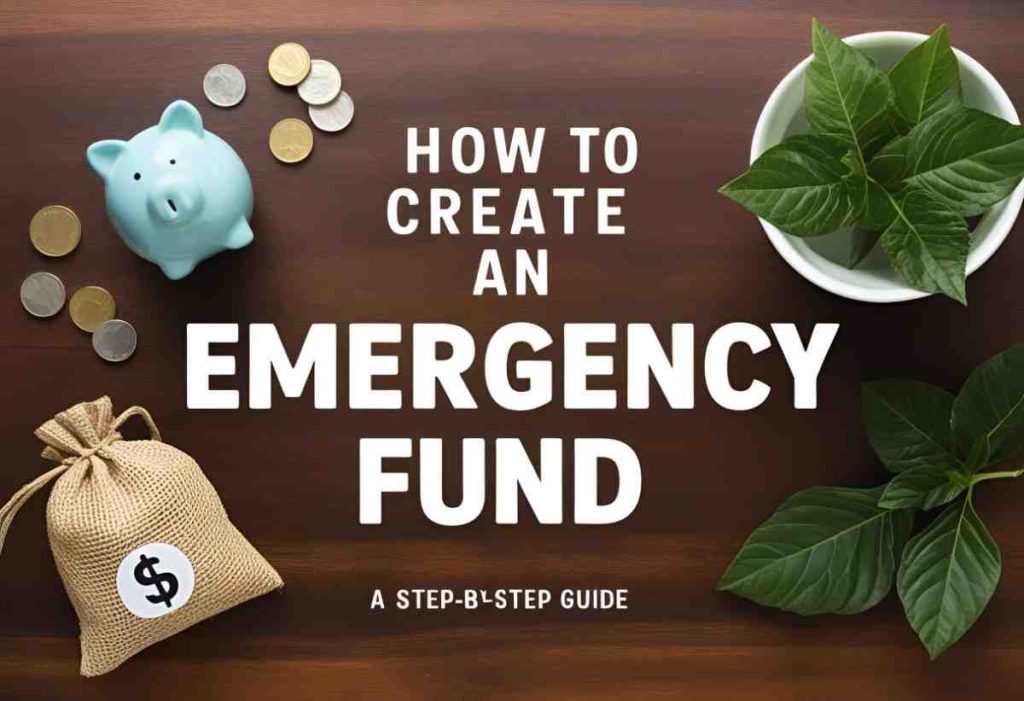HOW TO CREATE AN EMERGENCY FUND: A STEP-BY-STEP GUIDE

Life is so full of unexpected expenses and financial surprises. A car breaks down, a medical emergency arises, or you lose your job. These unexpected events can be stressful and financially draining. That’s why having an emergency fund is essential. At VALDYMAS ENTERPRENEURIAL AND TRANSFORMATIONAL LEADERSHIP EMPOWERMENT PROGRAM ( VETLEP) we’ll show you how you can create an emergency fund that will help you weather through financial storms and achieve long-term financial stability.
Step 1: Determine Your Emergency Fund Goal
The first step in creating an emergency fund is to determine how much you need to save. Calculate your monthly living expenses, including rent/mortgage, utilities, food, transportation, and minimum payments on debts. Aim to save 3-6 months’ worth of living expenses in your emergency fund. This will provide a cushion in case of unexpected expenses or loss of income. According to a study by the Federal Reserve, 40% of Americans don’t have enough savings to cover a $400 emergency expense (Federal Reserve, 2019).
Step 2: Assess Your Income and Expenses
To build your emergency fund, you’ll need to free up some money in your budget. Review your income and expenses to see where you can cut back on non-essential expenses. Consider ways to increase your income, such as taking on a side job or selling items you no longer need.
Step 3: Choose a Savings Account
Open a separate savings account specifically for your emergency fund. Look for an account with a high-yield interest rate and low fees. This will help your emergency fund grow over time and earn interest.
Step 4: Set Up Automatic Transfers
Set up automatic transfers from your checking or salary account to your emergency fund account. Choose a specific amount or percentage of your income / salary to transfer regularly. This will make saving easier and less prone to being neglected.
Step 5: Prioritize Your Emergency Fund
Make building your emergency fund a priority by treating it as a necessary expense. Avoid dipping into your emergency fund for non-essential expenses. Remember, this fund is for emergencies only.
Step 6: Review and Adjust
Review your emergency fund regularly to ensure you’re on track to meet your goal. Adjust your contributions or expenses as needed to stay on track.
BENEFITS OF HAVING AN EMERGENCY FUND
Having an emergency fund provides several benefits, including:
- Financial security and peace of mind.
- Avoiding debt when unexpected expenses arise.
- Covering essential expenses during periods of unemployment or reduced income.
TIPS FOR BUILDING AN EMERGENCY FUND
- Start small and gradually increase your contributions over time
- Consider using a separate savings account or fund specifically for emergencies
- Avoid using your emergency fund for non-essential expenses
By following these steps and tips, you can create an emergency fund that will help you weather financial storms and achieve long-term financial stability. At VETLEP we advice Don’t wait until it’s too late – start building your emergency fund today!!!!!
REFERENCES
- Federal Reserve. (2019). Report on the Economic Well-Being of U.S. Households in 2019.
- The importance of having an emergency fund is emphasized in various financial planning resources, including those from the Consumer Financial Protection Bureau and financial advisors.



